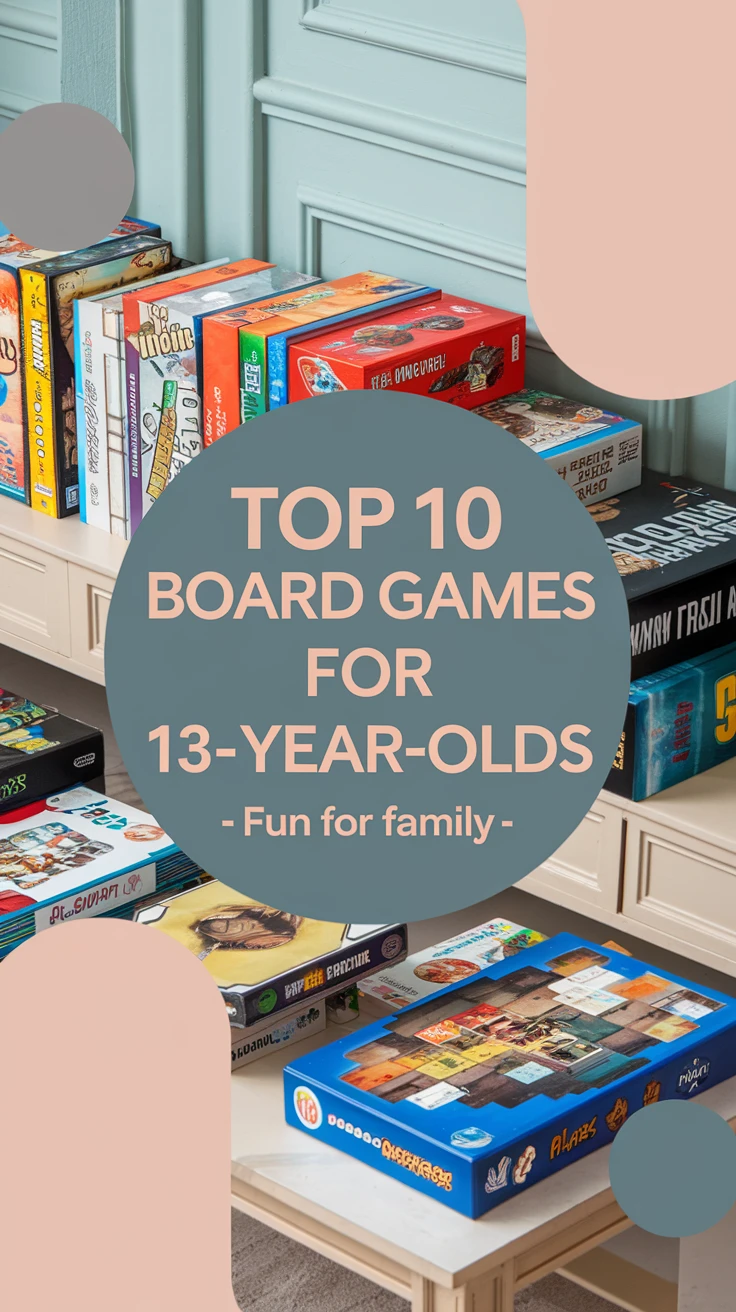
In a world dominated by screens and digital entertainment, finding engaging activities for 13-year-olds can be challenging. Board games offer a perfect solution, combining social interaction, strategic thinking, and good old-fashioned fun. As someone who’s spent countless hours playing board games with teenagers, both as a parent and youth group leader, I’ve discovered that the right board game can transform an ordinary evening into an unforgettable family experience. Let’s explore the top 10 board games that are perfectly suited for 13-year-olds, ensuring your next family game night is a hit!
Why Board Games Matter for Today’s Teenagers
Before diving into our top picks, it’s crucial to understand why board games remain relevant in the digital age. Today’s teenagers face unique challenges, from excessive screen time to reduced face-to-face interactions. Board games offer numerous benefits that directly address these issues:
- Social Skills Development: Face-to-face interaction and communication
- Critical Thinking: Strategy and problem-solving opportunities
- Digital Detox: Screen-free entertainment
- Family Bonding: Quality time with loved ones
- Emotional Intelligence: Learning to handle competition and cooperation
Selection Criteria for Teen-Friendly Board Games
When choosing board games for 13-year-olds, several factors were considered to ensure the best possible gaming experience:
| Criteria | Why It Matters |
|---|---|
| Age-Appropriate Content | Challenging enough without being too mature or too simple |
| Play Time | 30-90 minutes sweet spot for teen attention spans |
| Player Count | Flexible options for both small and large groups |
| Learning Curve | Easy to learn but offering depth for mastery |
Top 10 Board Games for 13-Year-Olds
1. Catan
Perfect for developing strategic thinking and negotiation skills, Catan remains a classic choice. Players build settlements, trade resources, and compete for victory points. I’ve watched countless teenagers go from confused newcomers to skilled traders within a single session.
2. Ticket to Ride
This railway-building adventure teaches geography while entertaining. Players collect train cards and build routes across various maps. The game’s beauty lies in its simple rules but deep strategy options.
3. Pandemic
A cooperative game where players work together to save humanity from disease outbreaks. This game teaches teamwork and crisis management – skills that are particularly relevant today.
4. Codenames
Perfect for larger groups, this word-association party game develops vocabulary and creative thinking. It’s become a staple at our family gatherings, often leading to hilarious moments and inside jokes.
5. King of Tokyo
This dice-rolling monster battle game offers the perfect mix of luck and strategy. The cartoon violence and monster theme particularly appeal to teens while remaining family-friendly.
6. Mysterium
A haunting cooperative game where one player sends visual clues to others. It’s like a beautiful mix of Clue and Dixit, perfect for artistic minds and creative problem-solvers.
7. 7 Wonders
This card-drafting civilization builder teaches resource management and planning. The simultaneous play keeps everyone engaged throughout the game.
8. Dixit
A storytelling game that encourages creativity and imagination. It’s particularly great for bringing quieter teens out of their shells.
9. Splendor
An elegant gem-collecting game that teaches economic concepts through engaging gameplay. The short playing time makes it perfect for weeknight gaming.
10. One Night Ultimate Werewolf
A quick social deduction game that teaches logical thinking and bluffing skills. It’s perfect for larger groups and can be played multiple times in an evening.
Tips for Successful Family Game Nights
| Tip | Implementation |
|---|---|
| Regular Schedule | Set a consistent weekly or monthly game night |
| Food Planning | Prepare snacks that won’t damage game components |
| Game Rotation | Let different family members choose games each time |
| Learning Strategy | Watch tutorial videos before playing new games |
Conclusion
Selecting the right board games for 13-year-olds can create lasting memories and valuable learning experiences. Each game on this list offers unique benefits while maintaining the crucial fun factor that keeps teens engaged. Remember, the best game is ultimately the one that brings your family together and creates moments of joy and connection.
Key Takeaways
- Board games provide valuable screen-free entertainment for teenagers
- The best games balance educational value with pure entertainment
- Regular game nights can strengthen family bonds and communication
Frequently Asked Questions
-
How long should a family game night last?
Aim for 1-2 hours, depending on your family’s schedule and the games being played. It’s better to end while everyone’s still having fun than to drag it out too long.
-
What if my teenager isn’t interested in board games?
Start with more casual, party-style games like Codenames or One Night Ultimate Werewolf. These games are more social and can help build interest in other types of board games.
-
How can I make sure everyone has fun, regardless of skill level?
Mix up game choices between strategy and luck-based games. This ensures that different players can shine and everyone has a chance to win.
-
Are these games good for mixed age groups?
Yes, most of these games work well with mixed ages, especially when played in teams. Older players can help younger ones learn the rules and strategies.
-
How much should I expect to spend on these games?
Most quality board games range from $25-50. Consider it an investment in family entertainment that can provide years of enjoyment.
-
What if we don’t have enough players for some games?
Many games have variable player counts or special two-player variants. Check the box for player count recommendations before purchasing.
-
How can I protect the games to make them last longer?
Consider using card sleeves for games with cards, establish clear rules about food and drinks near games, and store games properly in a cool, dry place.
-
Should I let teenagers win sometimes?
No, it’s better to play honestly. Teenagers can tell when you’re letting them win, and genuine victories are more satisfying and build real confidence.
-
What if arguments break out during game play?
Establish clear rules before starting and use these moments as teaching opportunities about sportsmanship and conflict resolution.
-
How often should we introduce new games?
Try introducing a new game every few months while maintaining a rotation of favorites. This keeps game nights fresh while building expertise in games everyone enjoys.

